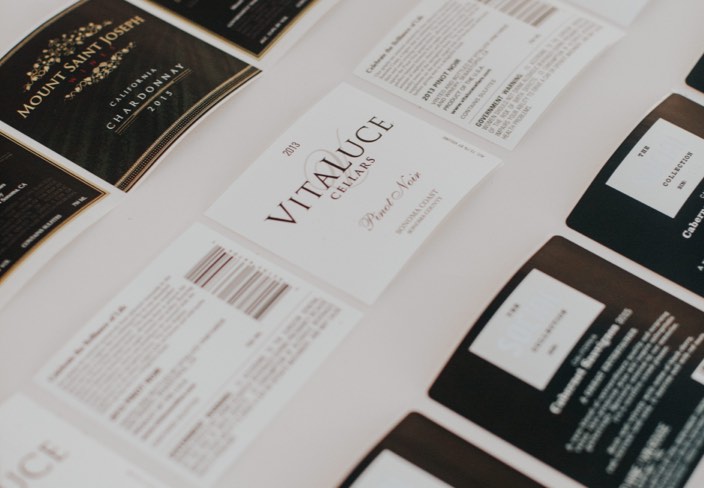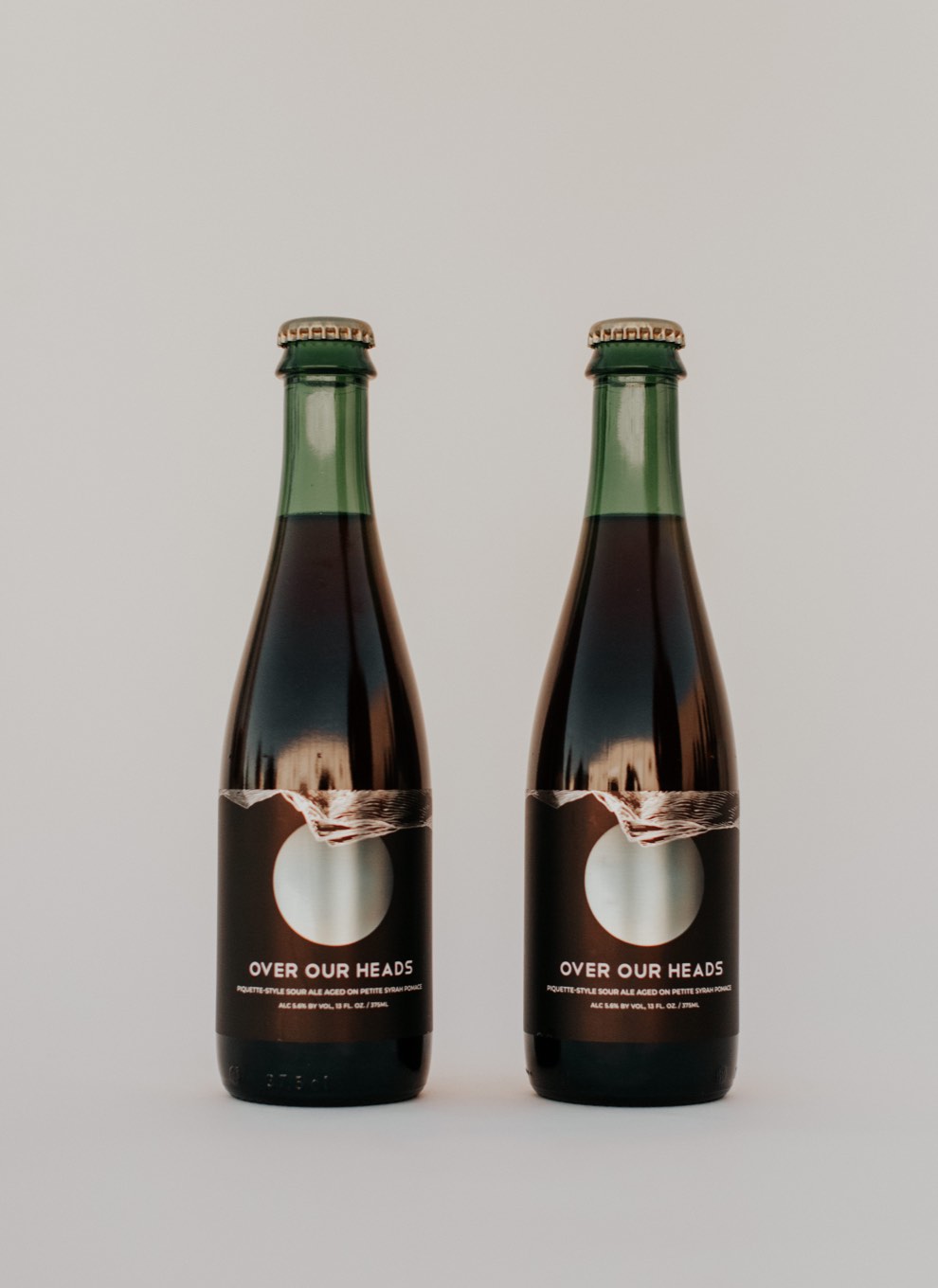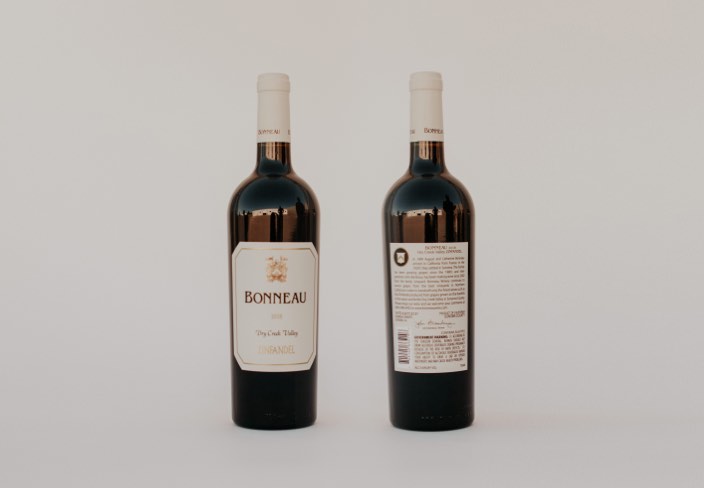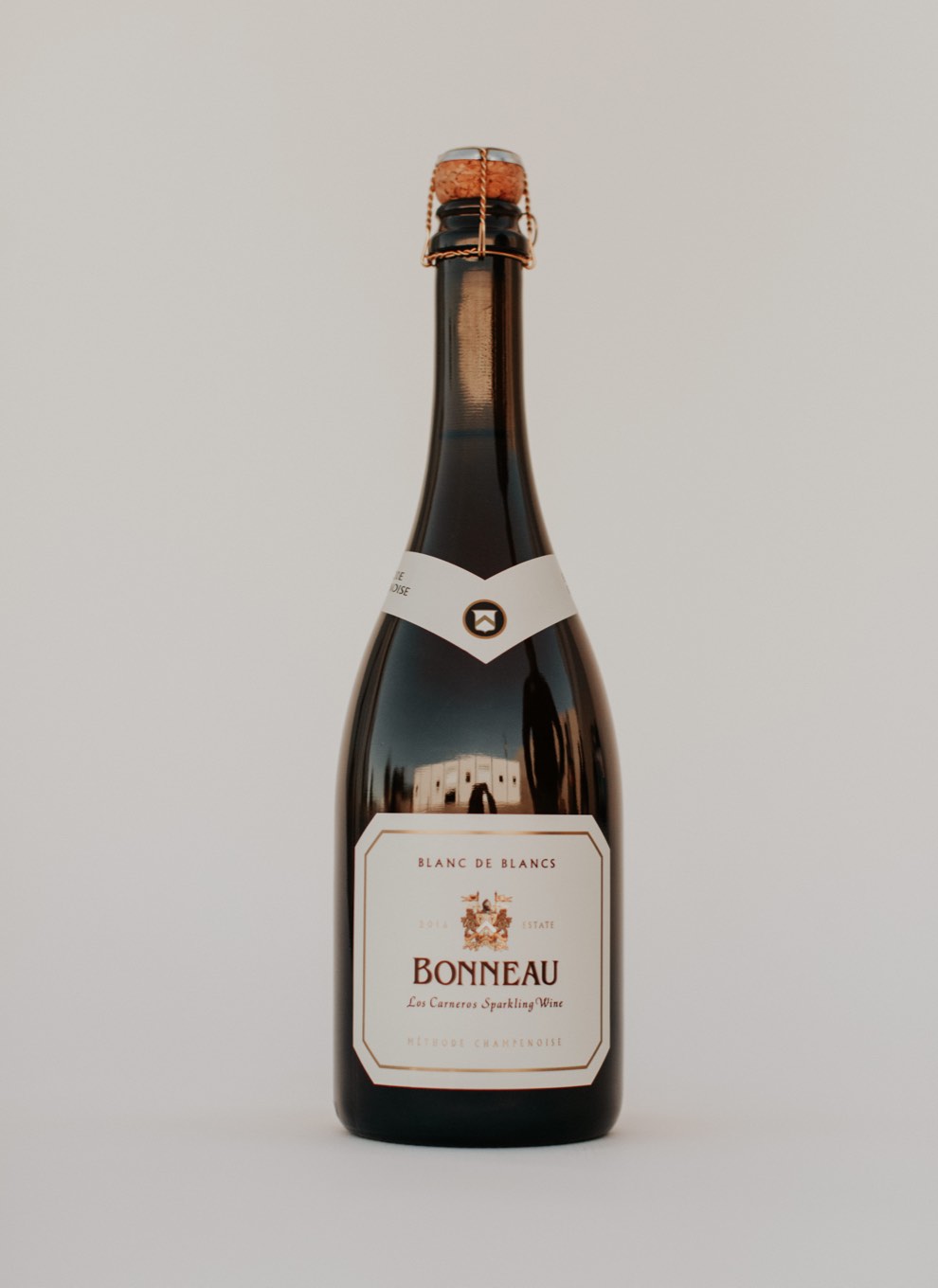What to Include on Your Wine Labels
Everything You Need to Include on Your Wine Product Labels
- Brand — You’ll want this front and center. Stay true to your brand and try to include a unique logo. You may also want to include a unique wine name or flavor. These help distinguish your product, especially if you are planning on launching a collection.
- The vintage (year) of your wine — This information isn’t mandatory on the label but is common to have on wine labels since it can speak to the quality of the wine.
- Varietal type — Whether it’s a Chardonnay, Pinot Noir, Rosé, etc., the varietal type is required for wine labels. Additionally, wines that call out a specific varietal must be at least 75% from that varietal. If not, then it can have a generic name like “white wine” or something clear and similar.
- Region — On your wine label, if a state or county is specified, it’s a federal law that at least 75% of the grapes that were used in production come from that location. If an American Viticultural Area (AVA) is cited, then the law states that at least 85% of the grapes must come from that area. Certain states also have their own regional laws, so make sure to research that before you finalize your labels.
- Bottler vs. producer — The name and address of the bottler or importer are required. If your products were made and bottled in different locations, you must print both names and addresses of the locations on your wine label.
- Alcohol content, net content, and sulfite warning — You must include the Alcohol By Volume (ABV) percentage and how much wine is in the bottle (expressed in millimeters). Does your wine have more than 10 parts per million of sulfur dioxide or more? If so, your label must have a warning that says “CONTAINS SULFITES.”
- Health warning statement: A specific government warning is required on all beverages with 0.5% alcohol content or more.
- UPC Code: You’ll need a scannable bar code if you want to sell your wine in stores and easily track inventory.
- Bottle, box or can? Bottles are most popular, but boxes and cans are trendy. Which is right for your product? How you package your wine will make a difference in your labeling strategy, options and costs. Do you want a label-less look or a clear-cut label affixed to your wine? Shrink sleeve labels or adhesive labels? Is a hot-fill process right for you? These are all questions a good label manufacturer can help you answer.
- Legible fonts and backgrounds: Since alcohol is a drug, there are specific legal requirements on how legible important information needs to be, from size, style and color to where it is placed. This can affect your overall layout and label size, so be sure to take this into account before finalizing your label design.

Make Your Wine Labels Stand Out With Content and Design
Everyone loves a good story! While staying true to your brand, include your wine’s story on your label. Wine pairing suggestions, flavor inspiration, or even history on the winery or vineyard are great ways to stand out. Fun facts aren’t mandatory, but are enjoyable to customers and help set you apart or draw someone more to your brand. Extra details are great ways to gain positive perceptions from people, so don’t be afraid to add some content on the label if it makes sense for your brand.
Wine Label Materials, Embellishments, and Adhesives
There are a ton of ways great labels help communicate the quality and style of your wine. Whether you want a sophisticated matte material, an extravagant glossy finish, or a sustainable paper, you can choose a material that matches the aesthetic and notes of your wine. After picking your label material, you can consider special treatments to help elevate your label even more.
Popular wine label materials include textured and uncoated paper, clear film, bi-axially oriented polypropylene (BOPP), metallic or metallised paper, natural kraft paper, and gloss paper. Ask about premium paper options to give your wine an extra special touch of elegance.
For a more premium or unique look, you may want to embellish your labels with metallic or glossy finishes, a leather or wood look, spot varnish, foil stamp, holograms, and die cuts. Many labels are printed in full color to bring vibrant artwork to life.
For adhesives, you’ll want to take moisture resistance, pressure sensitivity, and durability into account. If you don’t want your labels to peel off easily or disintegrate while sitting in a bucket of ice, consider wet label adhesives or a laminate. Ask a label vendor to help you explore different varnish, coating, and substrate options.
Typography is also your friend! Explore the many ways you can use words to help your brand stand out. A high-quality printer will ensure your words — and any unique design elements — come out clean and sharp so your brand looks high quality.


Digital Printing for Wine Labels
Why print digitally? Digital printing offers a nearly unlimited spectrum of colors, 100% perfect print quality, and no printing plates or setup charges, making it ideal for the small runs and more complex designs. This gives you more flexibility with design and timing. Should you wish to personalize or vary your labels in any way, digital printing also allows you to create seemingly endless varieties all at once.GMP Wine Labels
GMP (Good Manufacturing Practices) is a standard of manufacturing practices for food and beverage products. If your label will come into direct contact with food or drink (such as a wine can), your label or packaging likely needs to be produced in a GMP-compliant facility. Ask your packaging supplier if they can comply. (Hint: a GMP facility will always have a certificate from a third-party auditor saying the facility is in compliance for a certain period of time.)Why a Great Label Vendor Makes Wine Labels Easier
It’d be wise to choose a vendor who can get to know your brand and grow with you. The long-term relationship can really pay off in the long run. Signing with a vendor that is prepared to grow with your brand can create consistency and a level of cohesiveness to your labels with the different wines in your collection. Start the conversation now so you don’t have to find a new vendor later.
Get the Best Wine Labels with The Label Shoppe
At the Label Shoppe, we can help you distinguish which treatments best fit your brand. Whether it’s through textured materials, foil stamping, typography, bold colors, or unique shapes – we want to make sure your product stands out and you don’t settle for something you don’t love!
We specialize in digital printing and understand firsthand the importance of meeting the rigorous standards, realistic budget needs, and aggressive timelines of our customers. Our state-of-the-art facility makes nearly every label design you might have possible, from unique materials and die cuts to difficult-to-print designs, moisture-resistant labels, delamination or relamination, foil effects, screen printing, and 100% pharmaceutical-grade defect inspection. These are highly important factors when considering your brand’s growth, and we want to help you every step of the way.
Our seasoned staff is known for delivering high-quality labels on-time and in-full, even with short turnaround times. We take climate control, minimal waste, team happiness, and productivity seriously — even the simplest black and white bar code labels are held to our highest standards, ensuring you get the quality you deserve.
If you don’t yet have a vendor, or if you need guidance on labeling, reach out to us for a consultation. We would love to help you achieve your label goals.

Get In Contact
Request a Quote
Subscribe To Our Newsletter
We noticed you’ve visited our site recently, please consider signing up for our newsletter

